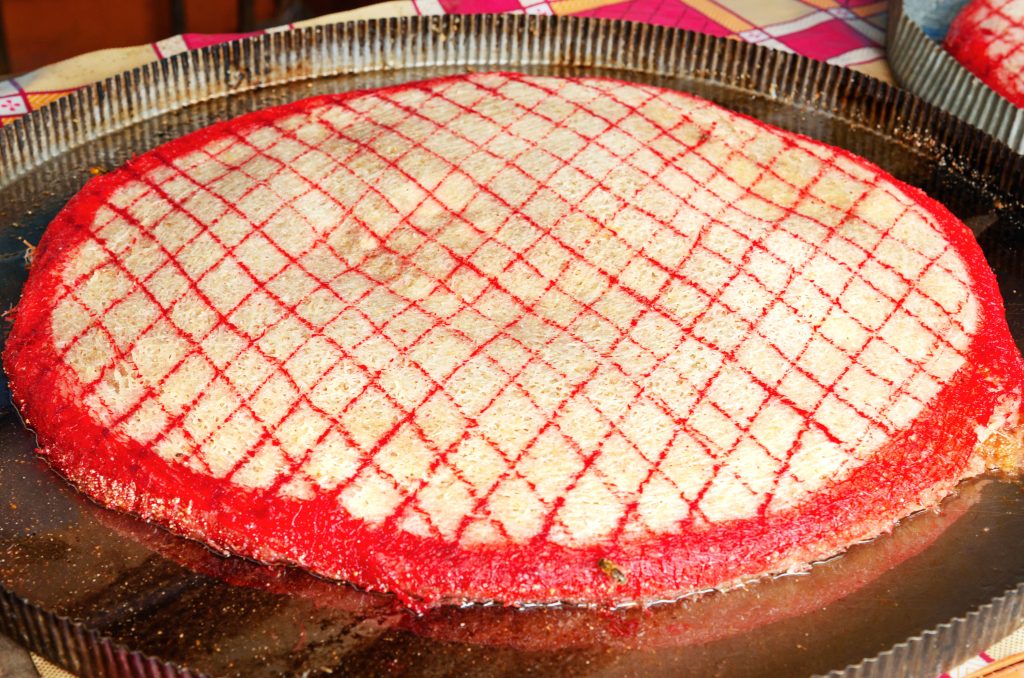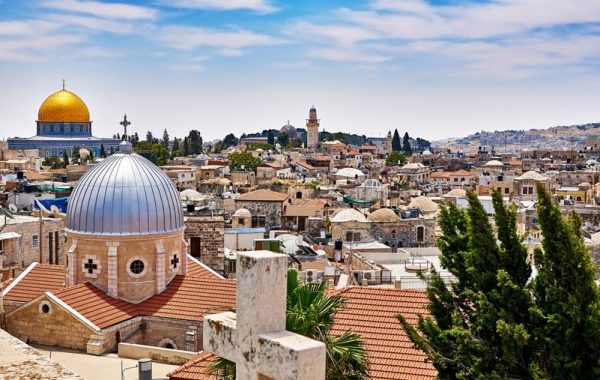From savory plovs and tempting piti to delectable saj and soothing tea, explore the rich and flavorful culinary heritage of this country.
You need to wear your comfiest, loosest pants when travelling to Azerbaijan. A good practice to follow, when visiting a country renowned for its abundance of fresh produce and culinary tradition. Of course, with globalization, top notch restaurants serving international fare and funky cafes given to innovation are abundant. Thankfully that hasn’t hampered the co-existence of ancient culinary traditions, that local chefs have held on to with much pride.
In pursuit of distinctive local flavours, I make my way to the Shirvanshah Museum Restaurant. Wallpapered with local crafts of the land from carpets to copper vessels to antique furniture, it’s an interesting setting in which to sample Azerbaijani fare. The Plov (pilaf) is a welcome mat to most feasts in these parts. We order the Shah Plov, the star of plovs, from a myriad varieties that feature on the menu.
Ceremonially cut open by the waiter, the plov is a vision of steaming rice prepared with saffron, layered with dried apricots, plums, raisins, and chunks of lamb. Side dishes to a meal almost always include a salad, bread, and pickles. Other specialties arrive in rapid succession. Azeri kebabs from chargrilled lamb to chicken are laid before us. Lule kebab, made of minced lamb, combined with finely-chopped onion, seasoned with black pepper, skewered, and grilled, sweeps my vote. Stuffed vegetables, soups and an abundance of greens are also mealtime staples.

The common denominator to all my dining experiences in Baku, are robust flavors and fresh ingredients, all from the country’s diverse climactic zones. If you stop at Yashil (Green) bazaar, keep your eye especially peeled for Saffron. Turns out this ruby red spice has long been cultivated in the coastal village of Bilgah on the Absheron peninsula. Caviar is also worth seeking out. Another star ingredient in a country known for its abundance of fruits (everything from peach to apple to fig) is Pomegranate. It makes its delectable presence felt in sauces, jams, wines and even juices.
But it’s my visit to Sheki, a four-hour drive from Baku and a place that played a key role on the historic silk route, that seals the reputation of Azerbaijan for me as gastronomic paradise. I walk past houses that retain the area’s ancient character and end up at the Gagrin restaurant, in pursuit of Piti – the lamb and chickpea soup.

Tea is another element woven into the psyche of the locals, who are ever ready for a cup of this drink, best had – black, strong and with a slice of lemon on the side. So, it is to the Sheki Park hotel we go for an evening cuppa. The view of the forested mountains that skirt the old city accompanies the ceremonial service of tea, that arrives in a samovar, a metal urn used to boil water for tea.
Azerbaijanis love sweet treats and I’m invited to try a very specific Baklava (Sheki Halva), which according to Sheki convention is made in a circular form and cooked in a traditional copper pan. Giving the layers of filo pastry their distinctive taste, are the ingredients that blend into it – hazelnut, walnut, saffron, coriander seed and cardamom.

On the road back to Baku, stuffed and in a fuzzy good mood from all the eating, we take a short drive West of Shamakhi, to the Meysari Winery. As part of the country’s flourishing wine scene, peppered with age-old and historical wine regions, these are among the newest winemakers. On a wine tour, I visit the area under vine, experience the wine processing unit and partake in a wine tasting, accompanied by local cheese, made clearly aware of the ever-evolving nature of the local wine-scene.
At the end of my time here, I take home more than local wine, cheese and honey collected in the countryside, I take home a feeling of connection, fostered by long community meals and a generous, happy table. I think back to how Kamal encouraged me to try Dushbara, a popular dumpling soup, made with little parcels of dough, filled with meat, and cooked in a broth of onion and spice, in the quirky courtyard of the Old Town Sheki restaurant. Or of how Pervin feeds me with Qutab, a quintessential street food that consists of a thin flat bread, stuffed with cheese and spinach, that I try at a quaint street-food stall outside Gobustan, a site for mud volcanoes and ancient petroglyphs, near Baku. Or how Leyla explains that Dolma comes in all permutations. Vegetables like peppers, tomatoes and eggplant or vine leaves come stuffed with minced meat, rice, and herbs. I try the vine leaves stuffed with lamb (with a dollop of yoghurt on top), at the old-world styled Firuze restaurant in Baku – my heart and tummy both satisfied.
Quick Facts
Where to eat in Baku
1. For Shah Plov, Dolma and Azeri Kebabs- Firuze restaurant / Shirvanshah Museum restaurant / Mugam Club restaurant
2. Qutab – Sumakh restaurant / Shah restaurant / stall outside rock site of Gobustan
Where to eat in Sheki
1. For Lamb and chickpea soup (Piti) / Dushbara – Gagrin restaurant
2. Traditional high tea, accompanied by grand views – Sheki Park Hotel
3. Azeri kebabs, soups, grilled meats – Old Town Sheki restaurant / Vip Karvan restaurant
For latest travel news and updates, food and drink journeys, restaurant features, and more, like us on Facebook or follow us on Instagram. Read more on Travel and Food Network
Book Your Travel Packages
10 Day Europe Tour of Germany, Czech Republic, Hungary and Austria
12-Day Europe Tour from London to Amsterdam, Venice, Rome and Paris
Sonia Nazareth can be found brandishing pen and camera on various anthropology-based, literary, art and travel assignments across the world. She’s endlessly astounded by the vivid unpredictability of the places she’s encountered and tends to approach them as if they were people, full of revelations, needing to be listened to and engaged with.






















